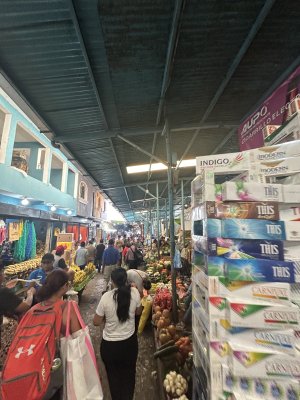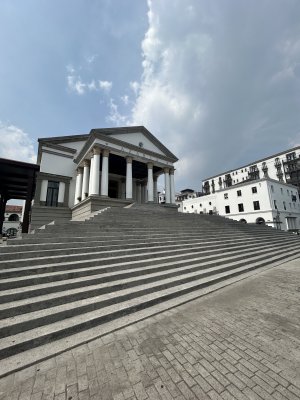Guatemala: Day 4
Jakyra Green graduated this year as an English and Secondary Education major.
I will skip summarizing boring logistics and I’ll dive straight into the heart of my short but rewarding experience in Guatemala. Despite being here less than a week, I’ve already encountered multiple rewarding moments. Our stay at SEMILLA, a beautiful seminary surrounded by an even more beautiful garden, has been a tranquil base. Our first few days have been mostly about Guatemalan history. Our activities have ranged from going on different walking tours to meeting with community activists. Two standout moments are our visit to the Puerta de Esperanza organization, as well as our trip to Cayalá.
Guatemala is filled with many contrasts. People, including myself at first, are guilty of thinking Guatemala is poor, unsafe, and run down. But it is one of the richest and most beautiful Latin countries, which is why it’s known for its many contrasts. There are good and not-so-good parts, but that is true of any place.

Guatemala’s contrasts are exactly what I saw in Puerta de Esperanza and Cayalá. Puerta de Esperanza is an organization and was in a more “run down” part. We toured conditions such as families and young children working. An image I’ll always remember is a young girl with charcoal on her face. We then visited Cayalá the next day, a city that is the complete opposite. There was not a single person sitting in the road or any trash, everyone was dressed fancy, everything was expensive, and so on. While Cayalá was a beautiful place, this contrast frustrated me. There is an unequal wealth distribution and money is clearly going to people and places already elite.

A previous class discussion revealed that Guatemala’s challenges aren’t a result of individual failures, but rather structural issues fueled by a long history of government corruption and neglect. Yet, amidst these challenges, I witnessed remarkable and inspiring community-driven initiatives at places like Puerta de Esperanza. Every day people are building relationships authentically, providing education, and creating positive change.
This is just a small snippet of what we explored. We’ve done so much like visit Casa de la Memoria, a museum to honor indigenous victims of genocide. Overall, I’m eager to continue learning and growing through this experience in empathetic ways. The experience is, without a doubt, solidifying my belief that the world is much bigger than myself and the world I am accustomed to.




